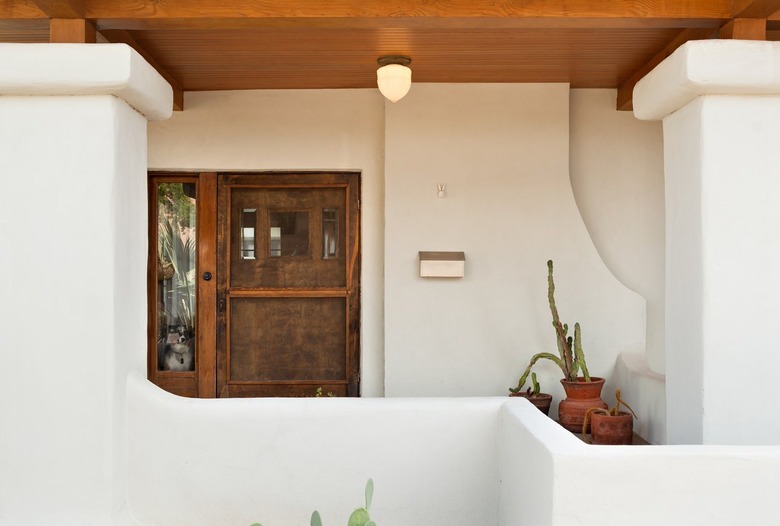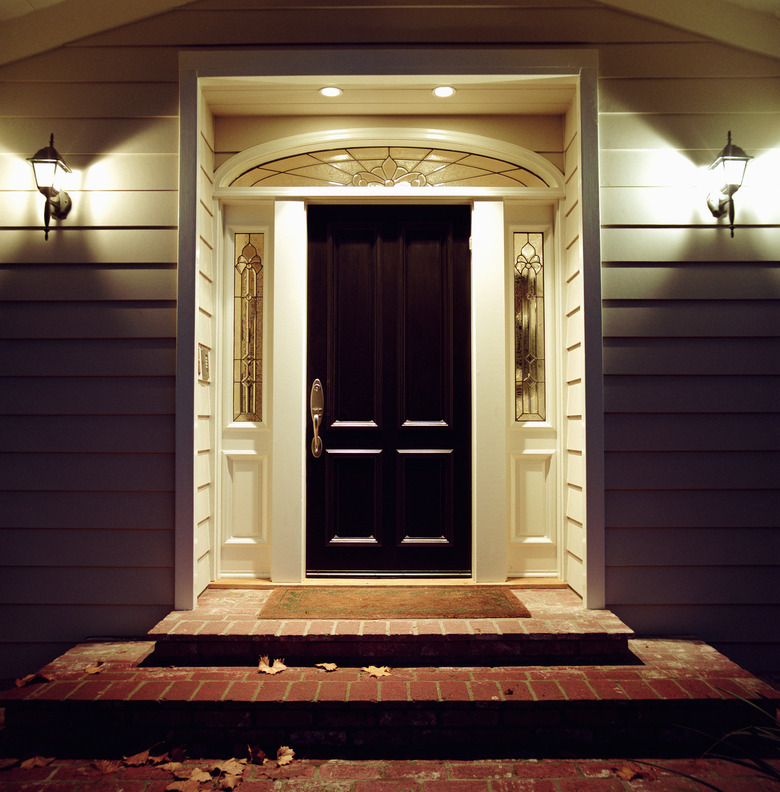A Basic Guide To Home Security Lighting — Types And Strategies To Keep Your Home Safe
Security lighting runs the gamut from timed lights to bright floodlights that cover a large area to motion-detecting lights that turn on when someone approaches the home. In many cases, a home's security lighting setup is a combination of several types of lights as well as ambient lighting that helps ensure the perimeter of the structure has at least a little illumination at all times after dark to deter would-be burglars.
Motion Detection Basics
Motion Detection Basics
Motion sensor lights only turn on when their sensors detect movement nearby. In floodlight form, a motion-sensing light washes a large area in bright light when movement occurs in the detection range of the sensor. The driveway and garage areas are excellent places to install motion detector outdoor security lights, as they'll help deter anyone from wandering through those portions of your property after dark. For example, if the garage is behind the home, the motion-detecting light mounts on the home's soffit or a similar area, with the sensor positioned to detect motion in the backyard portion of the driveway or near the garage entrance.
Motion-sensing lights help save on the electric bill since they only turn on with detected nearby motion. This feature also comes in handy in an area between where you park the car at night and the walkway leading to your home, as your path is lit when you return from a trip to the store after dark.
Solar motion-detecting lights are an even simpler option. They're inexpensive and can be installed virtually anywhere, such as on the front porch, with no electrical experience required. They're also great when letting the dog roam the backyard after dark. Solar motion-sensing lights generally don't produce the same amount of light as their hardwired floodlight counterparts and don't illuminate as large of an area, although solar technology improves virtually every year.
The downside to motion-detecting lights is that virtually any moderate amount of movement could trigger many types of motion sensors. Placing the light near a flag or a tree could trigger the sensor as the flag or tree branches move with a breeze. Nocturnal animals exploring your yard may also trigger the lights. On the bright side, the lights turn off after a few minutes or after an amount of time you've selected once motion is no longer detected. Adjusting the sensor so it picks up the right area is a trial-and-error process, so ask a friend to serve as the motion source if adjusting the sensor requires standing on a ladder.
Timed Lighting Basics
Timed Lighting Basics
When it comes to outdoor security lighting, virtually any exterior light source that works on a timer could be a form of security lighting. The most effective timed light offers enough illumination that you can see anyone roaming through the lit area. Placing timed lights above the garage doors and above all entry doors, including on the sides or back of the home, is a great choice. These can be set to turn on from dusk to dawn or later at night when you normally go to bed. They can be left on all night or be programmed to turn off when you wake up in the morning. Ambient lighting pointing up from the ground toward all ground-floor windows can also be set to work on a timer, keeping the windows slightly illuminated all night long.
The downside to timed lighting options is that unwanted visitors may be aware of the light schedule and may know if you are not home or if you've turned in for the night. Smart lighting systems, programmable by computer or a phone app, help remedy this issue, allowing you to randomize the lighting schedule a bit. Timed lighting may use more electricity than motion-sensing lights since the lights are left on for hours at a time. Uplights positioned beneath windows may slightly illuminate ground-floor bedrooms during typical sleeping hours, but blackout curtains help keep the room dark if the light is an issue.
Types of Security Lights
Types of Security Lights
The most common types of bulbs used for bright exterior lighting are halogen, LED and high-intensity discharge (HID). Halogen bulbs are often used in floodlights and get really hot to the touch. In cold climates, they're hot enough to melt snow that accumulates around them.
LEDs, on the other hand, do not get nearly as hot and use far less energy as LED bulbs cost more than the other bulb types initially but save money in the long run. They also last the longest, up to 10 times the life span of the average HID bulb.
HID lights are used to illuminate vast areas at once, such as parking lots or a huge backyard with several outbuildings. These are the classic old-school street lights that take a while to reach full brightness. They're powered by an electrical arc traveling through a gas, turning the gas into a plasma. Unfortunately, these lights lose some of their brightness over the years. Some also have toxins, such as mercury, in the bulbs. HID fixtures have a ballast that may make noise as it starts to fail.
The Best Security Lighting Tips
The Best Security Lighting Tips
The best security lighting plan combines passive and active security lighting. Timed lighting and lights you control manually are forms of passive lighting, while motion-sensing lights are active lighting. As part of a lighting plan, for instance, use motion-sensing floodlights as deterrents in the backyard or driveway area plus a timed front porch light to keep prowlers away from the front door during the wee hours of the night. Use ambient landscape lighting, even of the solar variety, near all walkways leading up to the home as well as in the backyard around the patio and even the perimeter of the yard.
Even lighting that seems mostly decorative, such as strands of party lights strung from the back porch to the garage, enhances the security of the area provided that the lights are bright enough to illuminate the surrounding area. Lamps on posts near the driveway or walkways seem decorative, yet they offer some visual security since they illuminate the immediate area for guests and residents arriving home after dark.
If you live in an area where porch pirates are an issue, a good option is a smart security system that records video as it senses motion. This way, you'll be able to tell who is near your front door or on your property after dark. Many smart security brands, including Ring, offer options via a phone app, such as a camera, floodlights, a siren and even the ability to communicate with anyone at your front door. As with security lighting and security systems in general, options vary from one model to the next, and some components may be optional. Some of these setups require hardwiring into weatherproof electrical boxes on your home's exterior.

